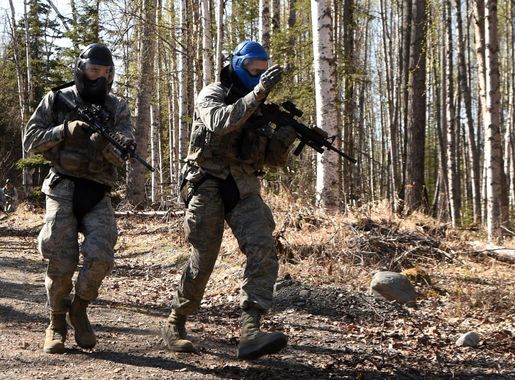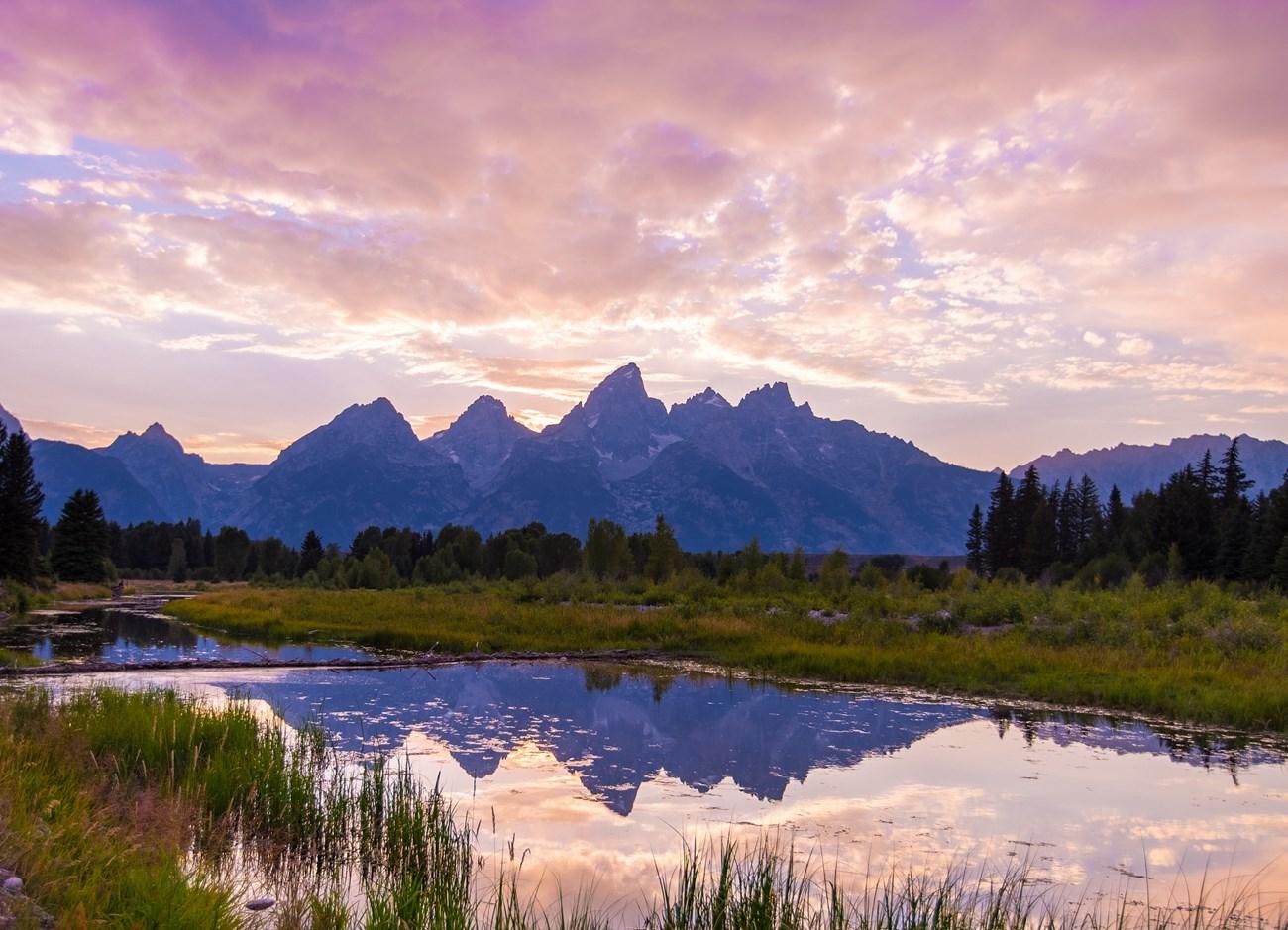
Tuskegee National Forest: Alabama's Hidden Gem
Discover the tranquility and rich heritage of Tuskegee National Forest, Alabama's hidden gem for nature, history, and outdoor adventures.
Nestled in the heart of Alabama, Tuskegee National Forest is a serene escape for nature lovers and outdoor enthusiasts alike. Spanning over 11,000 acres, this forest is a haven for those seeking to immerse themselves in the natural beauty of the southeastern United States. The forest offers a variety of recreational activities, including hiking, horseback riding, and mountain biking on its well-maintained trails. The Bartram National Recreation Trail is particularly popular, winding through diverse landscapes and offering glimpses of local wildlife. Tuskegee National Forest is also rich in history, with close proximity to the Tuskegee Airmen National Historic Site and the Tuskegee Institute National Historic Site. These landmarks provide a deeper understanding of the area's cultural and historical significance, particularly in African American history. Visitors can explore the legacy of the Tuskegee Airmen, the first African American military aviators, and learn about the contributions of Booker T. Washington at the Tuskegee Institute. For those interested in camping, Tuskegee National Forest offers several primitive campsites where visitors can enjoy a night under the stars. Fishing enthusiasts will find solace at the forest's lakes and streams, which are teeming with bass, catfish, and bream. Whether you're looking to embark on a peaceful hike, delve into history, or simply relax in nature, Tuskegee National Forest offers a diverse range of experiences to ensure a memorable visit.
Local tips in Tuskegee National Forest
- Visit during the spring or fall for the best weather and vibrant foliage.
- Bring insect repellent, especially in the warmer months, to protect against mosquitoes.
- Check trail conditions and maps at the ranger station before starting your hike.
- Don't miss the nearby Tuskegee Airmen National Historic Site for a dose of inspiring history.
- If camping, ensure to pack out all trash and leave no trace to preserve the natural beauty.
Tuskegee National Forest: Alabama's Hidden Gem
Nestled in the heart of Alabama, Tuskegee National Forest is a serene escape for nature lovers and outdoor enthusiasts alike. Spanning over 11,000 acres, this forest is a haven for those seeking to immerse themselves in the natural beauty of the southeastern United States. The forest offers a variety of recreational activities, including hiking, horseback riding, and mountain biking on its well-maintained trails. The Bartram National Recreation Trail is particularly popular, winding through diverse landscapes and offering glimpses of local wildlife. Tuskegee National Forest is also rich in history, with close proximity to the Tuskegee Airmen National Historic Site and the Tuskegee Institute National Historic Site. These landmarks provide a deeper understanding of the area's cultural and historical significance, particularly in African American history. Visitors can explore the legacy of the Tuskegee Airmen, the first African American military aviators, and learn about the contributions of Booker T. Washington at the Tuskegee Institute. For those interested in camping, Tuskegee National Forest offers several primitive campsites where visitors can enjoy a night under the stars. Fishing enthusiasts will find solace at the forest's lakes and streams, which are teeming with bass, catfish, and bream. Whether you're looking to embark on a peaceful hike, delve into history, or simply relax in nature, Tuskegee National Forest offers a diverse range of experiences to ensure a memorable visit.
When is the best time to go to Tuskegee National Forest?
Iconic landmarks you can’t miss
Tuskegee Airmen National Historic Site
Discover the inspiring legacy of the Tuskegee Airmen at this historic site in Alabama, celebrating their contributions to aviation and civil rights.
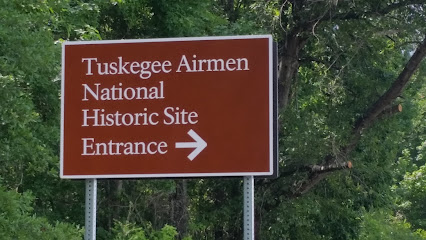
Tuskegee Institute National Historic Site
Discover the profound history of education and empowerment at the Tuskegee Institute National Historic Site, a landmark of African American heritage.
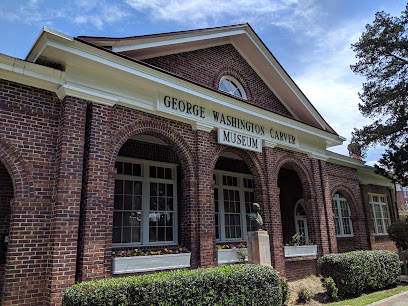
George Washington Carver Museum
Discover the inspiring legacy of George Washington Carver at this museum dedicated to his life, work, and contributions to agriculture and education.
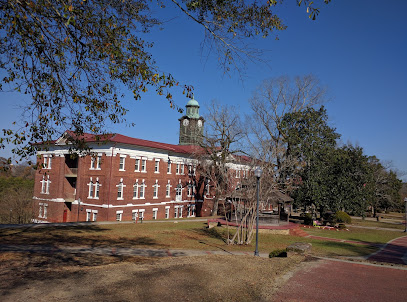
The Legacy Museum at Tuskegee University
Explore the rich history of African Americans at The Legacy Museum in Tuskegee, a profound tribute to cultural heritage and legacy.
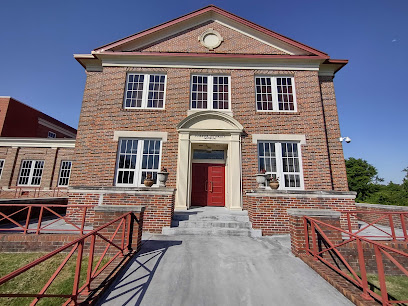
Tuskegee Human & Civil Rights Multicultural Center
Delve into the powerful history of civil rights at the Tuskegee Human & Civil Rights Multicultural Center, where stories of struggle and triumph come alive.
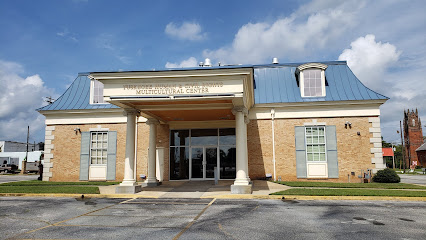
Friends of Tuskegee Airmen National Historic Site
Explore the inspiring legacy of the Tuskegee Airmen at the Friends of Tuskegee Airmen National Historic Site in Alabama, a tribute to courage and historical achievement.
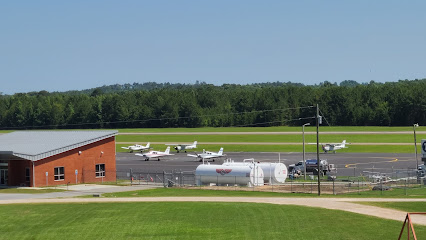
Booker T Washington Home Oaks
Explore the historic Booker T. Washington Home Oaks, a testament to the enduring legacy of education and civil rights in America.
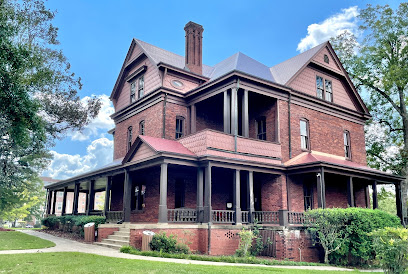
Tuskegee Lookout Tower
Discover the historic Tuskegee Lookout Tower, a remarkable landmark blending telecommunications history with stunning Alabama views.
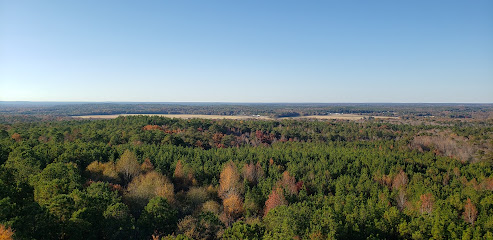
Tuskegee National Forest Campsite #8
Discover the beauty of Tuskegee National Forest Campsite #8 – a tranquil camping experience surrounded by nature's finest in Alabama.

Tuskegee Historic District
Discover the Tuskegee Historic District, a treasure trove of history, culture, and architectural beauty in Alabama, celebrating African American heritage.
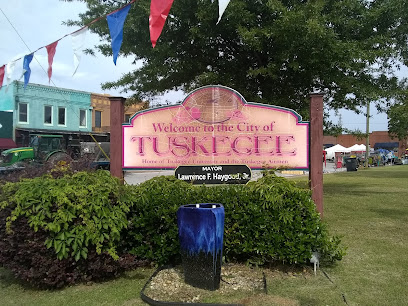
Bartram National Recreational Trailhead
Discover the natural beauty and rich history of the Bartram National Recreational Trailhead in Tuskegee, Alabama, a hiking paradise for all skill levels.
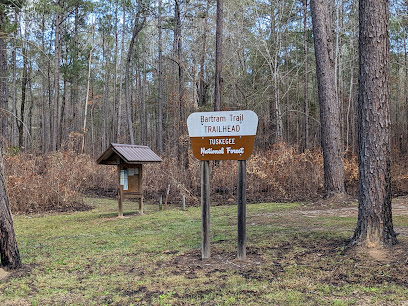
Booker T. Washington Monument
Explore the Booker T. Washington Monument in Tuskegee, Alabama, and delve into the inspiring legacy of education and civil rights in American history.
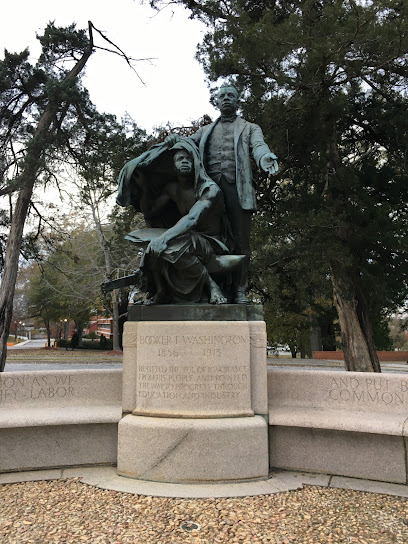
Tuskegee National Forest Campsite 12
Experience the tranquility of Tuskegee National Forest Campsite 12, Alabama's serene escape for camping and outdoor adventures amidst nature's beauty.
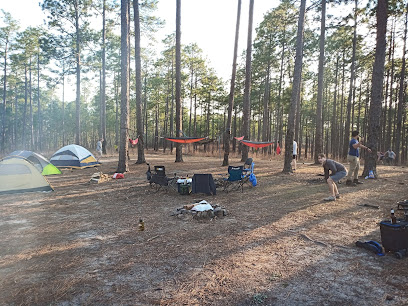
Unmissable attractions to see
Montgomery Zoo & Mann Wildlife Learning Museum
Experience the thrill of wildlife at Montgomery Zoo & Mann Wildlife Learning Museum, where adventure and education meet in Alabama's vibrant capital.
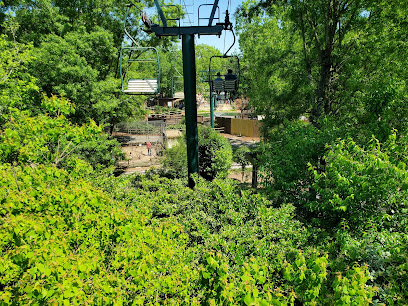
Talladega National Forest
Explore the breathtaking landscapes and diverse wildlife of Talladega National Forest in Alabama, a haven for nature lovers and outdoor adventurers.
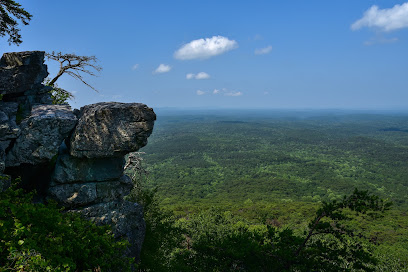
Majestic Caverns
Discover the enchanting underground world of Majestic Caverns, a historical landmark in Alabama featuring stunning formations and outdoor adventures.
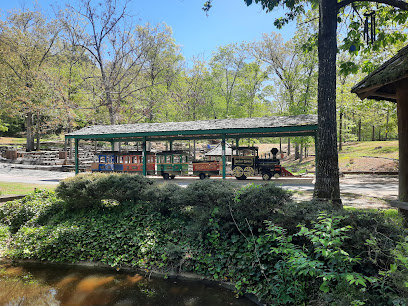
Tuskegee Airmen National Historic Site
Explore the history of the Tuskegee Airmen at this national historic site, celebrating their bravery and contributions during World War II.
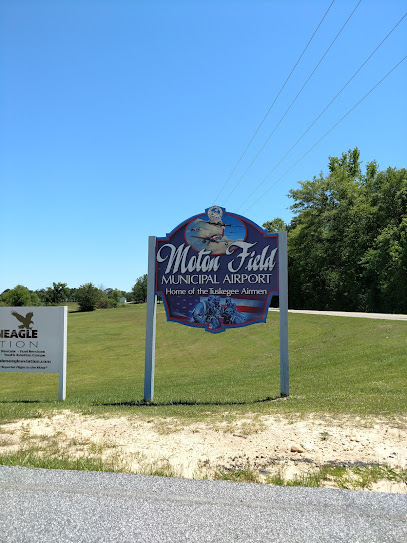
Town Creek Park
Explore the lush landscapes and recreational opportunities at Town Creek Park, an urban oasis in Auburn, Alabama, perfect for relaxation and family fun.

Kiesel Park
Explore the lush landscapes and serene walking trails of Kiesel Park in Auburn, Alabama, a perfect retreat for families and pet lovers alike.

Municipal Park
Explore the lush landscapes and recreational activities at Municipal Park, a tranquil gem in Opelika, Alabama, perfect for family fun and relaxation.
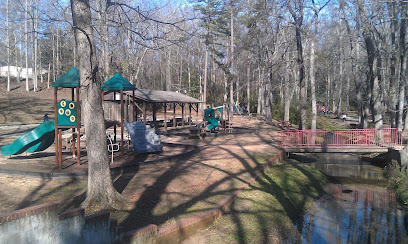
Horseshoe Bend National Military Park
Explore the stunning landscapes and rich history of Horseshoe Bend National Military Park in Alabama, a captivating destination for all nature and history lovers.
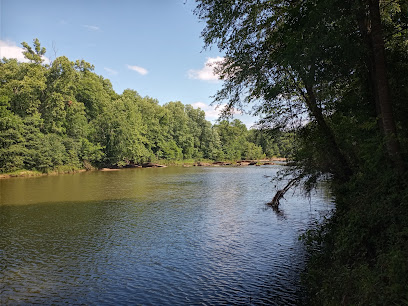
Donald E. Davis Arboretum
Explore the serene Donald E. Davis Arboretum, a natural haven in Auburn, Alabama, showcasing beautiful gardens and diverse plant species.
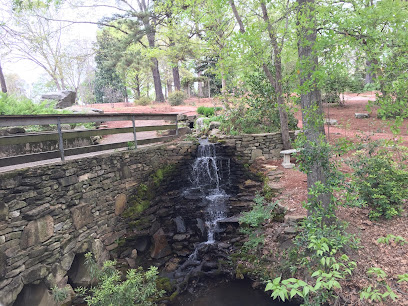
Museum of Wonder Drive Thru
Discover the Museum of Wonder Drive Thru in Seale, Alabama—a unique blend of art and curiosity awaits in this captivating drive-thru experience.
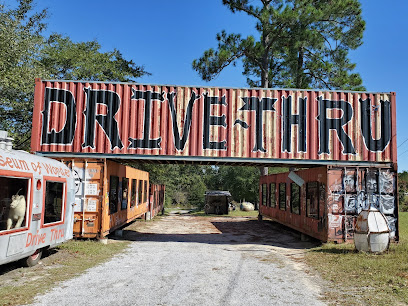
Kreher Preserve & Nature Center
Explore the natural beauty and tranquility of Kreher Preserve & Nature Center in Auburn, Alabama, perfect for hiking, picnicking, and family adventures.
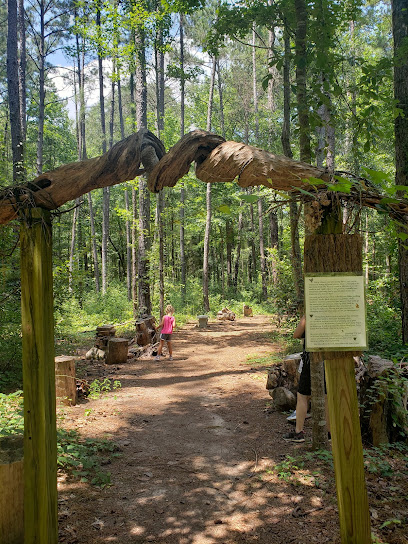
Fort Toulouse-Jackson Park
Explore Fort Toulouse-Jackson Park, a stunning historical site in Alabama offering nature trails, museum exhibits, and rich cultural heritage.
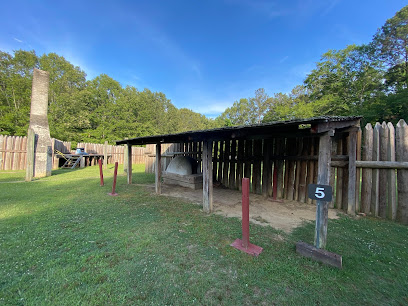
The Jule Collins Smith Museum of Fine Art at Auburn University
Explore diverse art collections and enriching exhibitions at The Jule Collins Smith Museum of Fine Art, Auburn's cultural gem.
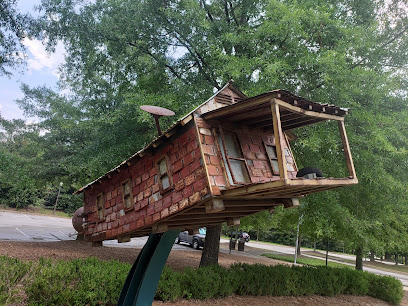
Smith Mountain Fire Tower
Experience breathtaking views and rich history at Smith Mountain Fire Tower, a top hiking destination in Alabama's scenic landscape.
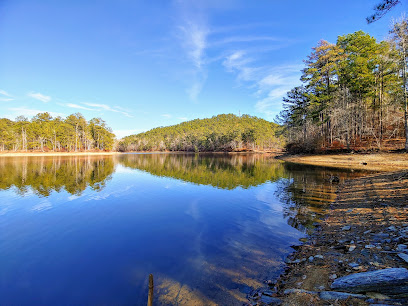
Toomer's Oaks
Experience the historic Toomer's Oaks in Auburn, Alabama, where tradition meets beauty in a serene natural setting.
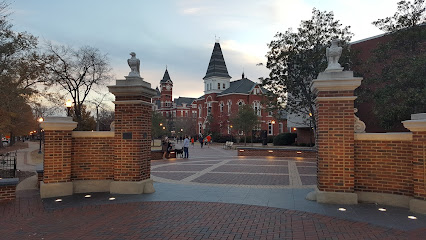
Essential places to dine
Burger King
Discover delicious fast food at Burger King in Tuskegee - where flame-grilled flavors meet Southern hospitality.
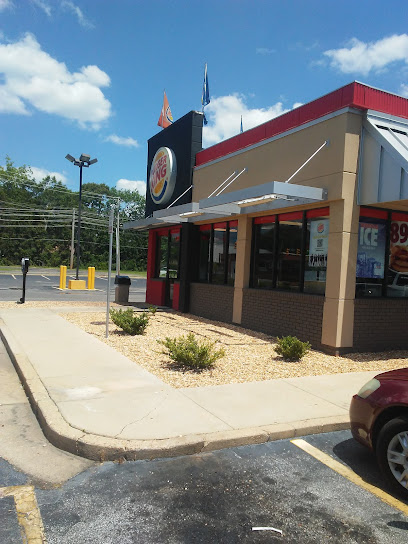
Torch 85 Restaurant
Discover Torch 85 Restaurant: A cherished truck stop in Tuskegee serving up classic American comfort food with friendly service.

American Deli
Discover hearty Southern comfort food at American Deli in Tuskegee – perfect for families craving delicious chicken dishes!

C&K Wings
Discover C&K Wings in Tuskegee - where delicious fast food meets Southern hospitality in every flavorful bite.

Blue Seas 2
Discover authentic Southern soul food at Blue Seas 2 in Tuskegee, Alabama – where tradition meets flavor in every bite.
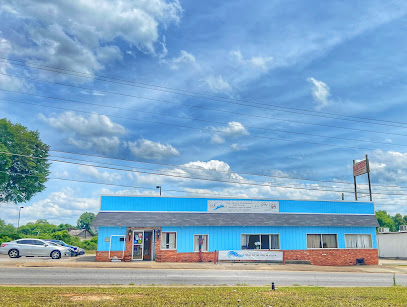
Popeyes Louisiana Kitchen
Discover the delicious essence of Cajun cuisine at Popeyes Louisiana Kitchen in Tuskegee - where every meal is a flavorful adventure.

Subway
Discover fresh flavors at Subway Tuskegee – where delicious sandwiches meet convenience and affordability.

China Pavilion
Savor authentic Chinese dishes at China Pavilion in Tuskegee - a culinary journey filled with flavor and tradition.

Vibezz Restaurant & Lounge Tuskegee
Discover exquisite southern cuisine at Vibezz Restaurant & Lounge in Tuskegee – where flavor meets hospitality in a vibrant setting.

The Yellow Store
Experience the charm of Tuskegee at The Yellow Store - where delicious deli bites meet local flavor in a welcoming atmosphere.
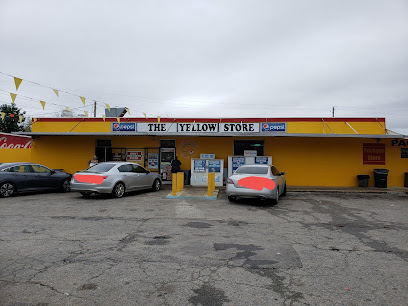
Austin Grill Express
Discover the flavors of Southern cuisine at Austin Grill Express in Tuskegee - a must-visit restaurant for every traveler!
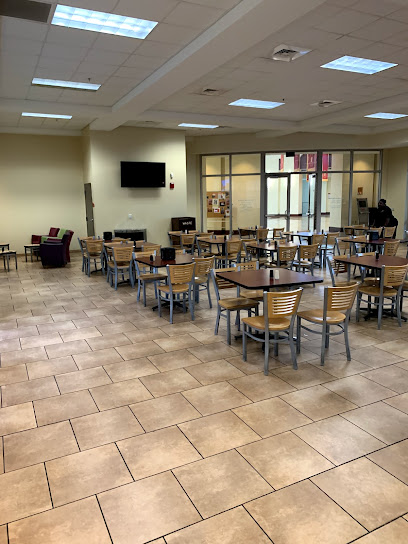
Markets, malls and hidden boutiques
Tiger Town Outdoor Shopping Center
Explore Tiger Town Outdoor Shopping Center, Opelika's premier shopping destination with diverse shops, dining, and entertainment for the whole family.

Torch 85 Truck Stop
Discover Torch 85 Truck Stop, your ideal pit stop in Alabama with diverse food options and convenient services for all travelers.
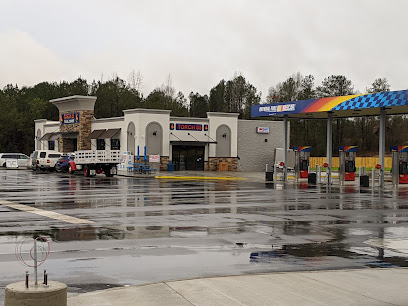
Piggly Wiggly Fresh Market
Discover the flavors of Alabama at Piggly Wiggly Fresh Market in Tuskegee, your local grocery store for fresh produce and regional specialties.

Elisabet Boutique
Elisabet Boutique: Your destination for unique fashion and exceptional service in Auburn, Alabama.

J&M Bookstore
Explore J&M Bookstore in Auburn, AL - a unique blend of literature, art supplies, and local gifts that captures the essence of Southern charm.

Family Foods
Experience the flavors of Tuskegee at Family Foods, your local grocery store with a touch of Southern hospitality.

The Mint Julep Boutique
Explore chic women's fashion at The Mint Julep Boutique in Auburn, where style meets southern charm and unique finds await every shopper.

MO'S BEAUTY SUPPLY
Discover beauty essentials at Mo's Beauty Supply in Tuskegee, AL - your one-stop shop for hair care, cosmetics, and skincare products.

Tuskegee University Bookstore
Explore the Tuskegee University Bookstore for a unique blend of books, apparel, and gifts that celebrate the legacy of an iconic institution.

Parts City Auto Parts - Thrower's Auto Parts & Tire Service,
Discover quality automotive supplies and expert services at Parts City Auto Parts in Tuskegee, Alabama, ensuring your vehicle is road-ready.
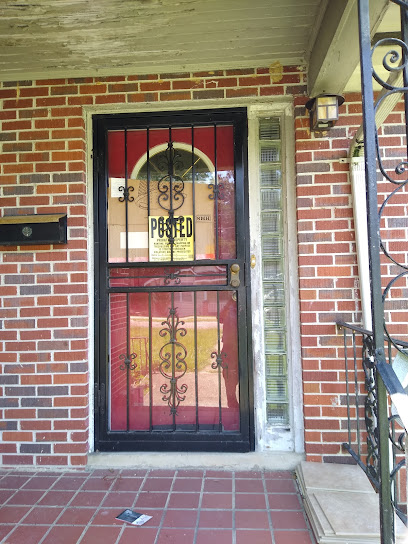
Dollar Tree
Explore Dollar Tree in Tuskegee for unbeatable deals on a wide range of products, from groceries to crafts, perfect for budget-conscious travelers.

Ellie Clothing
Explore Ellie Clothing in Auburn, AL for a unique boutique experience filled with trendy apparel and stylish accessories.

Farmers Home Furniture | Tuskegee, AL
Explore Farmers Home Furniture in Tuskegee, AL for stylish and affordable home furnishings and appliances that elevate your living space.

Gene & Sons Auto Repair
Discover Gene & Sons Auto Repair in Tuskegee: Quality auto service and parts with a community touch.

The Yellow Store
Explore Tuskegee's local charm at The Yellow Store, where delicious deli options, refreshing drinks, and friendly service await.
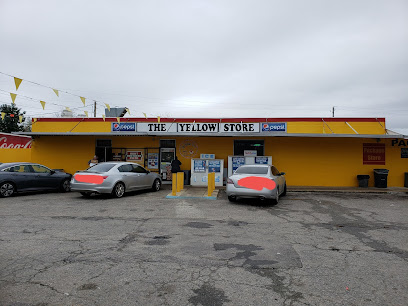
Essential bars & hidden hideouts
Irish Bred Pub
Experience the vibrant atmosphere of Irish Bred Pub, where authentic Irish cuisine meets Southern hospitality in Opelika, Alabama.
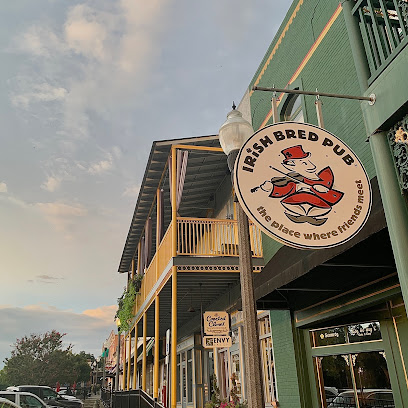
Skybar Café
Experience the vibrant nightlife of Auburn at Skybar Café, where cocktails and live music create unforgettable memories.

McDonald's
Experience the familiar taste of McDonald's in Tuskegee, Alabama, offering a range of fast food favorites, coffee, and breakfast options for every traveler.
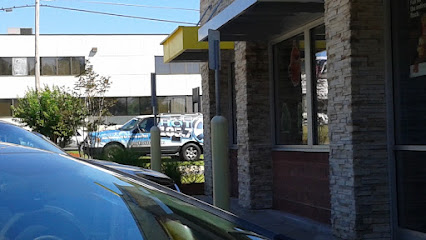
Halftime Sports Bar
Experience the vibrant atmosphere of Halftime Sports Bar in Auburn, where delicious grill fare meets thrilling sports action in a welcoming setting.

Burger King
Experience the delicious and speedy service at Burger King in Tuskegee, where mouthwatering fast food meets convenience.

American Deli
Experience the flavors of America at American Deli, Tuskegee's go-to spot for delicious chicken wings and comfort food.

C&K Wings
Discover the flavors of Tuskegee at C&K Wings, where delicious fast food meets friendly service in a casual setting.

Blue Seas 2
Discover the heart of soul food at Blue Seas 2, an authentic American restaurant in Tuskegee, Alabama, serving up classic dishes with love and tradition.
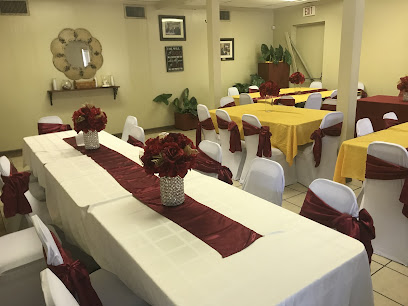
3:23 Cigar Bar
Experience relaxation and camaraderie at 3:23 Cigar Bar, Auburn's finest destination for premium cigars and beverages.

Popeyes Louisiana Kitchen
Experience the taste of authentic Cajun cuisine at Popeyes Louisiana Kitchen in Tuskegee, Alabama, where Southern comfort food meets fast casual dining.

Sneak & Dawdle
Unwind at Sneak & Dawdle, Opelika's vibrant lounge, featuring creative cocktails and a cozy atmosphere perfect for relaxing after a day of exploration.

Fat Daddy's
Discover the lively spirit of Auburn at Fat Daddy's, where great drinks and a vibrant atmosphere come together for an unforgettable night out.

Pizza Hut
Savor delicious pizza and wings at Pizza Hut Tuskegee, where great taste meets a welcoming atmosphere.

17-16 Bar
Discover the vibrant nightlife at 17-16 Bar in Auburn, Alabama, featuring cocktails, dancing, and a lively atmosphere for an unforgettable evening.
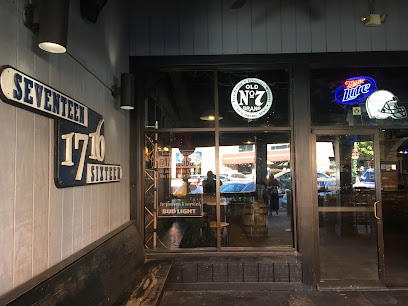
The End Zone Bar Grill & Lounge
Experience the vibrant atmosphere and delicious cuisine at The End Zone Bar Grill & Lounge in Auburn, Alabama, where every visit is a celebration.

Local Phrases about Tuskegee National Forest
-
- HelloHey y'all
[hey y'all] - GoodbyeSee ya later
[see ya later] - YesYessuh
[yessuh] - NoNaw
[naw] - Please/You're welcomePlease/Thank ya kindly
[please/thank ya kindly] - Thank youThank ya
[thank ya] - Excuse me/SorryPardon me/My bad
[pardon me/my bad] - How are you?How y'all doin?
[how y'all doin] - Fine. And you?I'm good. How 'bout y'all?
[i'm good. how 'bout y'all] - Do you speak English?Y'all speak English?
[y'all speak English] - I don't understandI don't get it
[i don't get it]
- HelloHey y'all
-
- I'd like to see the menu, pleaseCan I see the menu, please
[can i see the menu please] - I don't eat meatI don't eat no meat
[i don't eat no meat] - Cheers!Cheers!
[cheers] - I would like to pay, pleaseI'm ready to pay now, please
[i'm ready to pay now please]
- I'd like to see the menu, pleaseCan I see the menu, please
-
- Help!Help!
[help] - Go away!Get gone!
[get gone] - Call the Police!Call the Po-lice!
[call the po-lice] - Call a doctor!Call a doc!
[call a doc] - I'm lostI done got lost
[i done got lost] - I'm illI ain't feelin' right
[i ain't feelin' right]
- Help!Help!
-
- I'd like to buy...I wanna buy...
[i wanna buy] - I'm just lookingJust browsin'
[just browsin] - How much is it?How much does it cost?
[how much does it cost] - That's too expensiveThat's too much money
[that's too much money] - Can you lower the price?Can ya make it cheaper?
[can ya make it cheaper]
- I'd like to buy...I wanna buy...
-
- What time is it?What time is it now?
[what time is it now] - It's one o'clockIt's one
[it's one] - Half past (10)10 thirty
[10 thirty] - MorningMornin'
[mornin] - AfternoonAfternoon
[afternoon] - EveningEvenin'
[evenin] - YesterdayYestiddy
[yestiddy] - TodayToday
[today] - TomorrowTomorra
[tomorra] - 1One
[one] - 2Two
[two] - 3Three
[three] - 4Four
[four] - 5Five
[five] - 6Six
[six] - 7Seven
[seven] - 8Eight
[eight] - 9Nine
[nine] - 10Ten
[ten]
- What time is it?What time is it now?
-
- Where's a/the...?Where is the...?
[where is the] - What's the address?What's the address?
[what's the address] - Can you show me (on the map)?Can you show me (on the map)?
[can you show me on the map] - When's the next (bus)?When's the next (bus)?
[when's the next bus] - A ticket (to ....)A ticket (to ....)
[a ticket to]
- Where's a/the...?Where is the...?
History of Tuskegee National Forest
-
Before European settlers arrived, the land that is now Tuskegee National Forest was inhabited by Native American tribes, primarily the Muscogee (Creek) people. They utilized the rich resources of the area for hunting, fishing, and agriculture. Evidence of their presence, including artifacts and old trails, can still be found within the forest.
-
During World War II, the Tuskegee Airmen, the first African-American military aviators in the United States Armed Forces, trained at nearby Tuskegee Army Airfield. While the training did not occur within the forest itself, the surrounding area, including Tuskegee National Forest, played a significant role in their history. The forest provided a serene backdrop for the airmen and remains a symbol of their courage and determination.
-
Tuskegee National Forest was established in 1959, making it one of the smallest national forests in the United States. It was created to promote the conservation of the region's natural resources and provide recreational opportunities for the public. The establishment of the forest was part of a broader movement to restore and manage public lands in the southeastern United States.
-
In the 1930s, the Civilian Conservation Corps (CCC), a New Deal program aimed at providing jobs and improving public lands, played a crucial role in the development of Tuskegee National Forest. The CCC built infrastructure, planted trees, and worked on soil conservation projects, helping to shape the forest as it is today. Their efforts laid the groundwork for sustainable land management practices that continue to benefit the forest.
-
Tuskegee National Forest is home to a diverse range of flora and fauna, including several rare and endangered species. The forest's unique ecosystems, such as longleaf pine forests and wetlands, are of significant ecological importance. Conservation efforts within the forest aim to preserve these habitats and maintain biodiversity, highlighting the ongoing commitment to environmental stewardship.
-
Today, Tuskegee National Forest offers a variety of recreational activities for visitors, including hiking, birdwatching, fishing, and horseback riding. The forest's trails and scenic landscapes provide an immersive experience in nature, allowing visitors to connect with the area's rich history and natural beauty. The presence of historical markers and interpretive signs throughout the forest further enhances the educational experience.
Tuskegee National Forest Essentials
-
Tuskegee National Forest is located in Macon County, Alabama. The nearest major airport is Hartsfield-Jackson Atlanta International Airport (ATL), approximately 100 miles away. From the airport, you can rent a car and drive to the forest, which takes around 2 hours via I-85 South. Alternatively, Montgomery Regional Airport (MGM) is about 45 miles away, and driving from there takes roughly 1 hour. Public transportation options are limited, so renting a car is highly recommended.
-
Within Tuskegee National Forest, having a car is essential for getting around due to the lack of public transportation. The forest has several well-maintained gravel and dirt roads suitable for most vehicles. For those interested in biking, the Bartram National Recreation Trail offers a scenic route through the forest. Hiking is also a popular way to explore the area, with numerous trails ranging from easy to challenging.
-
The official currency in the United States is the US Dollar (USD). Credit and debit cards are widely accepted in nearby towns such as Tuskegee and Auburn, as well as at major gas stations and some camping facilities within the forest. It is advisable to carry some cash, especially if you plan to visit more remote areas or smaller establishments that may not accept cards. ATMs are available in the nearby towns.
-
Tuskegee National Forest is generally safe for tourists. However, it is advisable to take standard precautions. Avoid leaving valuables in your car, especially in visible areas. Be aware of your surroundings, particularly when hiking alone. The nearby town of Tuskegee has some areas with higher crime rates; it is best to avoid walking alone at night. Always lock your vehicle and secure your belongings.
-
In case of an emergency, dial 911 for immediate assistance. The nearest medical facility is the Tuskegee VA Medical Center, located about 15 miles from the forest. For non-emergency medical issues, there are pharmacies in nearby towns such as Auburn and Tuskegee. It is recommended to carry a basic first-aid kit while exploring the forest. Ensure you have travel insurance that covers medical emergencies.
-
Fashion: Do wear comfortable, weather-appropriate clothing and sturdy hiking boots. Avoid wearing overly flashy or expensive items. Religion: Do respect local customs and traditions if visiting nearby historic or religious sites. Public Transport: Do be prepared to rely on your vehicle, as public transport is virtually nonexistent in the forest. Greetings: Do greet people with a friendly 'hello' or 'hi.' Southern hospitality is prevalent, and a smile goes a long way. Eating & Drinking: Do try local Southern cuisine in nearby towns. Don’t leave trash behind; always follow 'Leave No Trace' principles.
-
To experience Tuskegee National Forest like a local, visit during the fall when the foliage is at its peak. Engage with local rangers for guided tours and educational programs. Don’t miss the Tuskegee Airmen National Historic Site and the Tuskegee Institute National Historic Site in the nearby town of Tuskegee. For a unique experience, participate in local events such as the Tuskegee Human and Civil Rights Multicultural Center tours.
Trending Landmarks in Tuskegee National Forest
-
Tuskegee Airmen National Historic Site
-
Tuskegee Institute National Historic Site
-
George Washington Carver Museum
-
The Legacy Museum at Tuskegee University
-
Tuskegee Human & Civil Rights Multicultural Center
-
Friends of Tuskegee Airmen National Historic Site
-
Booker T Washington Home Oaks
-
Tuskegee Lookout Tower
-
Tuskegee National Forest Campsite #8
-
Tuskegee Historic District
-
Bartram National Recreational Trailhead
-
Booker T. Washington Monument
-
Tuskegee National Forest Campsite 12
Nearby Cities to Tuskegee National Forest
-
Things To Do in Montgomery
-
Things To Do in Prattville
-
Things To Do in Selma
-
Things To Do in Dothan
-
Things To Do in Gadsden
-
Things To Do in Tuscaloosa
-
Things To Do in Cullman
-
Things To Do in Destin
-
Things To Do in Fort Walton Beach
-
Things To Do in Panama City Beach
-
Things To Do in Tallahassee
-
Things To Do in Huntsville
-
Things To Do in Pensacola
-
Things To Do in Chattanooga
-
Things To Do in Meridian

